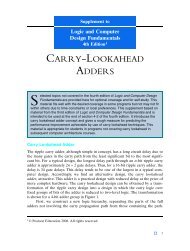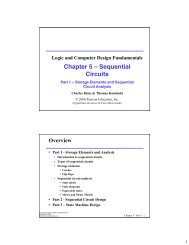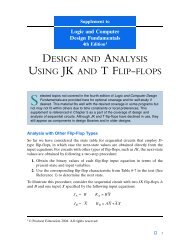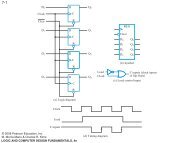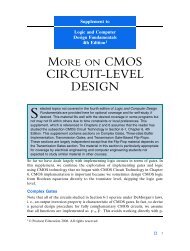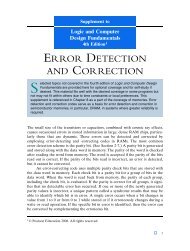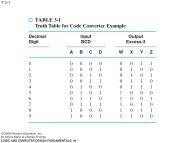Chapter 5 â Sequential Circuits
Chapter 5 â Sequential Circuits
Chapter 5 â Sequential Circuits
Create successful ePaper yourself
Turn your PDF publications into a flip-book with our unique Google optimized e-Paper software.
T Flip-flop (continued)<br />
• Implementation<br />
• To avoid 1s catching<br />
behavior, one solution<br />
used is to use an<br />
edge-triggered D as<br />
the core of the flip-flop<br />
• Symbol<br />
T<br />
T<br />
D<br />
C<br />
C<br />
<strong>Chapter</strong> 5 - Part 2 43<br />
Basic Flip-Flop Descriptors<br />
• Used in analysis<br />
• Characteristic table - defines the next state of<br />
the flip-flop in terms of flip-flop inputs and<br />
current state<br />
• Characteristic equation - defines the next<br />
state of the flip-flop as a Boolean function of<br />
the flip-flop inputs and the current state<br />
• Used in design<br />
• Excitation table - defines the flip-flop input<br />
variable values as function of the current<br />
state and next state<br />
<strong>Chapter</strong> 5 - Part 2 44<br />
22



